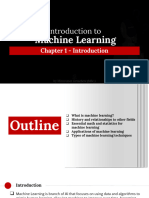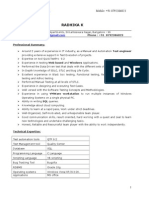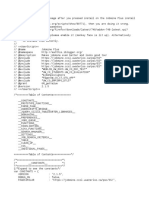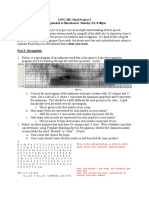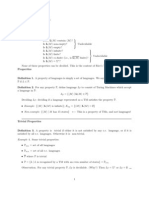0% found this document useful (0 votes)
47 views25 pagesIntroduction To Machine Learning
The document provides an introduction to machine learning (ML), explaining its definition, types, and importance in modern technology. It outlines the ML workflow, key terms, common tools, and real-world applications, while also addressing challenges such as data quality and bias. The lecture emphasizes the evolution of ML and its capabilities in automating tasks, personalizing experiences, and solving complex problems.
Uploaded by
mwascoderCopyright
© © All Rights Reserved
We take content rights seriously. If you suspect this is your content, claim it here.
Available Formats
Download as PDF, TXT or read online on Scribd
0% found this document useful (0 votes)
47 views25 pagesIntroduction To Machine Learning
The document provides an introduction to machine learning (ML), explaining its definition, types, and importance in modern technology. It outlines the ML workflow, key terms, common tools, and real-world applications, while also addressing challenges such as data quality and bias. The lecture emphasizes the evolution of ML and its capabilities in automating tasks, personalizing experiences, and solving complex problems.
Uploaded by
mwascoderCopyright
© © All Rights Reserved
We take content rights seriously. If you suspect this is your content, claim it here.
Available Formats
Download as PDF, TXT or read online on Scribd
/ 25














































